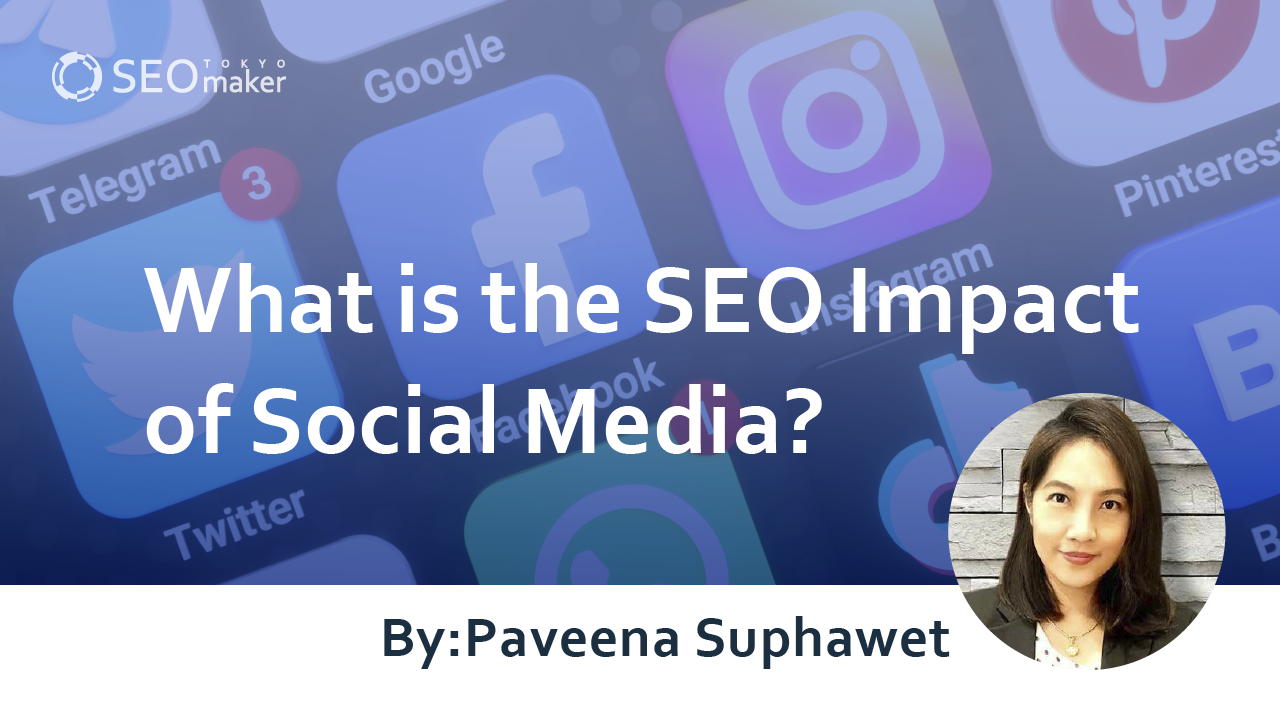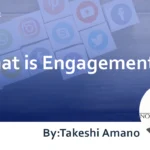What is the SEO Impact of Social Media? : Methods to Enhance SEO through Social Media
contents
- 1 The Relationship between Social Media and SEO
- 1.1 No Direct SEO Benefits Expected
- 1.2 Indirect SEO Benefits Are Possible
- 1.3 Methods to Gain Citations on Social Media
- 1.4 Enhancing Content Quality.
- 1.5 Creating an Environment for Easy Sharing on Social Media.
- 1.6 Interacting with Users on Social Media.
- 1.7 Characteristics of Social Media That Benefit SEO
- 2 Continuous Operation of Social Media Has SEO Benefits
- 3 Summary

Social media is an essential tool in web marketing. Platforms like Instagram and Twitter can quickly reach a broad audience if posts go viral, making social media indispensable in marketing strategies.
Effectively managing social media can bring significant benefits to companies. Understanding how to operate social media holds substantial value.
In this article, an advanced SEO consultant explains the relationship between social media and SEO, how to gain citations, the features of social media that are beneficial for SEO, and methods to sustain social media efforts.
The Relationship between Social Media and SEO
While SEO is crucial for ranking websites high on search engines, the rise of social media has also introduced methods to drive traffic to websites through social media.
It is essential to consider how far information spread through social media relates to SEO, underscoring the need to manage social media going forward. Knowing the relationship between social media and SEO is crucial.
There is no direct relationship between social media and SEO. According to Google’s official stance, social media does not directly affect SEO. This was confirmed by John Mueller of Google during a Google Search Central office-hours hangout on YouTube on August 14, 2015.
One reason social media links do not impact SEO is that they often carry a “nofollow” attribute, which tells search engines not to count the link for page ranking purposes.
Despite the large number of users on social media and the risk of misuse, “nofollow” tags are used to prevent manipulation of search rankings.
Even if the number of backlinks from social media increases, search engines do not consider these links in SEO evaluations.
Quote: English Google Webmaster Central office-hours hangout
Although there is no direct link between social media and SEO, it is believed that social media can indirectly affect SEO. Knowing both the direct and indirect relationships is essential for managing websites effectively using both SEO and social media strategies.
Top of Form
No Direct SEO Benefits Expected
One characteristic of highly ranked websites is the presence of backlinks. Sites that accumulate high-quality backlinks are considered valuable. Gathering good backlinks is a challenge for SEO strategies.
When a post with a link goes viral on social media, it spreads widely. If a company’s social media post goes viral, it may lead to increased website traffic as people follow the link. You might think this would significantly contribute to SEO due to the sheer number of backlinks, but in reality, backlinks from social networks like Twitter and Instagram do not offer SEO benefits.
This is because links on platforms like Instagram and Twitter are embedded with a “nofollow” tag. The nofollow tag disables any credit being given to these links by search engines, so even if the number of backlinks from social media increases, it does not aid SEO.
However, there are exceptions where links are set to “follow”. For instance, links on Hatena Bookmark affect page rankings because they are set to “follow”. If a topic becomes popular on Hatena Bookmark, it can gain many backlinks.
Indirect SEO Benefits Are Possible
While no direct SEO benefits can be expected from nofollow tags, indirect effects are possible.
Posts that go viral get recognized by many people, and viewers are likely to click on the links. This increases site traffic and can lead to higher search engine rankings.
Ultimately, achieving a higher ranking can fulfill the goal of enhancing visibility. Indirect effects contribute to SEO without relying on search engines.
Methods to Gain Citations on Social Media
A citation refers to instances where a company name, site name, store name, or brand name is mentioned or cited on other websites or social media.
Citations are crucial for MEO (Map Engine Optimization) strategies and are also effective for SEO. Gaining citations can increase brand recognition and lead to more direct searches (by company or service name). To acquire citations, consider the following strategies for managing your site
- Enhance the quality of your content
- Create an environment on social media that makes sharing easy
- Engage with users on social media
Enhancing Content Quality.
To gain citations, it is crucial to create high-quality content. To do this, you must focus on providing valuable content to users
- Improve the quality of the site and its content.
- Enhance the quality of products and services.
- Post high-quality services and content on social media.
Content that is thoughtfully created with the user in mind tends to receive higher ratings from Google. Understanding what information your target audience seeks and delivering high-quality content is a fast track to gaining citations.
Creating an Environment for Easy Sharing on Social Media.
To gain citations, it is necessary to get your posts shared on social media. For this purpose, incorporating share buttons on your website is essential. Share buttons make it easy for users to post with a single click.
The presence of a share button makes it more likely for information to spread when a user wishes to share it, which is a significant benefit of having share buttons.
Interacting with Users on Social Media.
Gaining positive citations requires fostering favorable sentiments among users. Thus, actively engaging with users is crucial.
When a company account leaves positive comments on an individual’s social media, it makes the user feel appreciated and often leads to them following the company account.
Regular interaction with users leads to a positive perception of the company. If users have a favorable impression, they are more likely to naturally share posts on social media, which ultimately helps in gaining citations.
Characteristics of Social Media That Benefit SEO
Examples of social media platforms that can impact SEO include
- mixi
Instagram.
Instagram users are predominantly in their teens to thirties, and it is said that they tend to use social media more than search engines to look for trends. Here are some key strategies for using Instagram for SEO
- Username
- Selection of hashtags
- Effective use of geotags
- Adjusting the frequency of updates
The username on Instagram should ideally be the company name for business accounts. Hashtags are used to associate posts with relevant keywords to attract search traffic, and choosing the right hashtags is crucial.
Geotags refer to location information, which can specify the location where photos were taken, enhancing usability.
Managing the frequency of updates on Instagram can be challenging. Posting too frequently might overwhelm followers, while posting too infrequently can lead to obscurity.
Timing is crucial for posts, and while special deals are obvious times to post, regular updates should aim to provide valuable information about products or services, thereby enhancing the account’s brand value.
X (ex-Twitter).
X is one of the top social media platforms in terms of active users and can be considered an essential tool for daily life for nearly half of the population in Japan. Twitter is known for its high capacity for viral spread. The benefits of operating Twitter include
- Ability to communicate with users
- Increased brand recognition
Twitter allows companies to receive direct feedback and reviews about their services, facilitating direct communication with users.
Moreover, Twitter’s DM (Direct Message) feature is more accessible for users than website contact forms, enhancing interaction.
Communicating with users can help in attracting customers and also in improving service and quality.
While traditional advertising can be costly, Twitter allows for low-cost operations provided you have the necessary resources. If leveraged correctly, the cost-effectiveness due to its viral nature can be extremely high.
Twitter is an effective tool for increasing brand awareness, and if you post engaging content, it can spread much faster than through traditional means, rapidly enhancing recognition of your company.
Facebook.
Facebook is another social media platform that uses the nofollow attribute for links. Here are some effective ways to use Facebook
- Appropriately title your Facebook page
- Fill in all basic information fields
- Enrich your content
Facebook includes a search function within the platform. It is important to use titles and keywords that are search-friendly and accurately reflect your content.
Filling in all the basic information fields, including keywords and links to your own website, is crucial. Clearly displaying the sender’s information in these fields can help gain trust from users.
Creating content that users want to share and are likely to act on can increase the likelihood of your posts being spread.
Mixi.
Mixi, launched in 2004, was once a popular social network in Japan before Instagram and Twitter began their services in the country. It still boasts a significant number of members, although the number of active users is not publicly disclosed.
There is some debate about whether Mixi contributes to SEO, but Mixi does not use the nofollow tag, so it is possible to gain backlinks from it.
Using Mixi to acquire backlinks can be considered a steady effort, but it might yield some beneficial effects.
Pinterest.
Pinterest is a platform primarily for the collection of images and videos. It is often mistaken for a social network due to its similarities with Instagram, but it is actually defined as a bookmarking tool.
There is some confusion about whether Pinterest uses the follow attribute; however, it generally uses the nofollow attribute. Occasionally, the nofollow tag may be removed, so there are times when it is possible to collect backlinks from Pinterest.
As of now, Pinterest has about 8.7 million users in Japan, mainly women in their 20s and 30s. Key features of Pinterest include
- Ability to “scrap” (link to) images from the web to a personal page
- Launched services in Japanese but remains relatively unknown
- Few users aim for interaction
While Pinterest has been discussed as a marketing tool, it currently does not attract much attention in Japan.
Top of Form
Continuous Operation of Social Media Has SEO Benefits
Consistency is crucial when managing social media. Increasing followers is not easy, but growing your social media presence is essential for the future management of your company. Strategic planning is necessary for sustained social media operation.
Challenges of Continuity
Creating a social media account can be done in minutes. However, many companies face the challenge of maintaining this consistently.
Taking Twitter as an example, although the latest tweets appear on users’ timelines, people typically see only the last 100 tweets, and sometimes even just the last 10. To ensure your tweets are viewed, you need to increase the frequency of your updates and encourage retweets.
Persistence is essential for social media managers. It is a misconception that simply posting spontaneous business-related thoughts is sufficient.
Methods for Sustaining Engagement
To maintain engagement, it is important to plan what kind of information to deliver to your targeted audience segment in advance. Using tools to research the information you want to disseminate is one method.
For example, if you are posting about SEO, you might use keyword tools to generate a list of suggested keywords related to SEO. You can research search volumes and organize the keywords by user interest into an Excel spreadsheet. For each keyword, brainstorm 5 to 10 possible related pieces of information.
Summarizing answers in about 20 to 50 characters for these keywords means you could create concepts for 500 to 1000 tweets if you have 100 keywords. When actually tweeting, adjust the content to fit your company’s social media tone.
Examples of tweets include
- Including keywords in H2 tags is important, but do not forget H3 tags.
- High-ranking SEO articles often have a lot of text, but more is not always better.
- Some may panic over major Google updates, but there is no fear if you consistently consider user needs in your articles.
- These might seem obvious, but simple and straightforward content needs to be reposted frequently. The frequency of exposure is crucial for tweets.
Users often skim through tweets, and it is rare for them to read in detail. If your company’s account consistently appears on their timelines, it helps build familiarity, and users are likely to develop a favorable view of your brand.
One Twitter search command is “min_faves”. Searching “min_faves:100 SEO” will show tweets about SEO that have received over 100 likes.
After reviewing tweets, decompose them and after some time, rephrase them in your own words. It is important to take your time and use your own language.
Also, if you identify users with many followers, look at the tweets they like. This gives insights into the types of posts they prefer. Creating tweets tailored to such personas can help make your posts more impactful to users.
The strategy for sustaining Twitter involves going the extra mile. For corporate accounts, adopting the right strategy is crucial.
Summary
While social media does not have a direct effect on SEO, it does have an indirect impact. Creating high-quality content and gaining positive citations can lead to SEO benefits from social media. Social media managers need to patiently nurture their company’s social media presence. Though results from social media management are not immediate, the long-term benefits are significant and can be crucial for ranking a company’s website higher in search results.
Top of Form










![What is a Description? Explaining the Meaning, Writing Style, and Changing Word Count – [2023 Edition]](https://www.switchitmaker2.com/en/wp-content/uploads/2024/09/what-is-description.webp)










